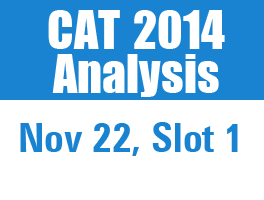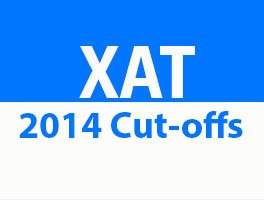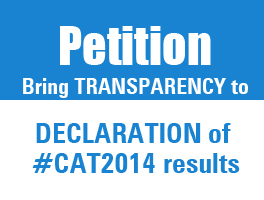After the questions of Issues of Social Concern, here comes the English Section update of the IRMA 2013-15 paper.
Hope you have a good time this Diwali.
Happy Learning.
IRMA 2013-15
English Comprehension
Cloze Test (Questions 1 – 15)
The task force on Direct Transfer of Subsidies on Kerosene, LPG and Fertilizers headed by Nandan Nilekani, Chairman of the Unique Identification Authority of India (UIDAI) has done a commendable job of spelling out the mechanics of the transition from today’s leaky subsidy regime to a system of direct cash subsidies . However, that does not really fix the problem. It must be noted that the mandate of the task force, and what it has delivered, is only the design of the plumbing. The success or otherwise of direct cash transfers depends on much more. It depends critically on proper identification of the beneficiaries; an issue that is beyond the jurisdiction of the task force and falls squarely in the government’s domain.
The operationalization of Aadhar, the Unique Identification Number, will make it possible to link entitlements to targeted beneficiaries. But it will not ensure beneficiaries have been correctly identified. Thus the old problem of proper identification that bedevils the present system will continue. If this is to be addressed state governments must get serious about identifying the needy, even if it means taking on vested interests that have undeservedly enjoyed taxpayer-financed state largesse.
In the case of kerosene, the original purpose of subsidy was to facilitate essential lighting in households beyond the physical or economic reach of electricity. Once total rural electrification is achieved, there would be no rationale whatsoever for subsidizing kerosene, which is largely used to adulterate diesel. Solar lanterns are a more efficient lighting subsidy, even before rural electrification becomes total. Cooking gas (LPG) is essentially consumed by middle and upper classes; very little by those below the poverty line. Hence, there is no justification for a tortuous three-stage process of de-subsidization of the product. Why not hike the price, say, by . 50 every three months to bring LPG prices on par with the free market price? True, this will call for political will but no more than what is required to dismantle the present system that has rent-seekers feeding off the system.
Source: http://articles.economictimes.indiatimes.com/2011-07-07/news/29747747_1_direct-transfer-direct-cash-lpg-prices
The words marked in bold in the above passage were the actual blanks. Each of these fifteen questions had five options.
Para jumble (Questions 16 – 21)
A) Despite real advances, there sadly remains an immense gap between these welcome legal guarantees and everyday life for women
B) Nearly 140 national constitutions specifically guarantee gender equality.
C) It is a peaceful revolution underpinned by an extraordinary transformation of legal rights.
D) Women across the world enjoy greater opportunities and freedoms than ever before.
E) But promising equality, of course, is not the same as delivering it on the ground.
F) Almost every country has signed international conventions signaling its commitment to outlaw discrimination against women.
Q16. Which of the following should be the FOURTH sentence of the arrangement?
a. B b. F c. A d. E e. C
Q17. Which of the following should be the FIRST sentence of the arrangement?
a. B b. A c. E d. D e. C
Q18. Which of the following should be the FIFTH sentence of the arrangement?
a. C b. F c. E d. D e. A
Q19. Which of the following should be the THIRD sentence of the arrangement?
a. E b. A c. B d. F e. D
Q20. Which of the following should be the LAST sentence of the arrangement?
a. D b. A c. B d. c e. F
Q21. Which of the following should be the SECOND sentence of the arrangement?
a. C b. E c. F d. B e. D
Source: http://www.guardian.co.uk/global-development/poverty-matters/2011/jul/06/un-women-justice-report-michelle-bachelet.
RC – Passage 1 (Questions 22 – 35)
The quality of national statistics produced by the Central Statistics Organization and the National Sample Survey Organization has kicked up some dust. “We are handicapped by the reliability of some of the basic data that we need to use in policy calculations,” Reserve Bank of India governor D. Subbarao said on Tuesday.Dodgy data is a handicap for decision makers. Consider the conflicting signals about the extent of the economic slowdown and especially the state of investment activity, two parameters that are key inputs for the central bank when it decides on interest rate policy. Or: The extent of poverty in India or new job creation in recent years has led to immense debates partly because the numbers put out by government statisticians are not fully trusted. So, there is little doubt that the system to collect various social and economic data needs to be overhauled, something that has been discussed at least since January 2000, when the National Statistics Commission headed by C. Rangarajan was set up. Yet, it is a mistake to condemn the entire statistics machinery in a sweeping verdict. Let’s face it: India is not China.A first step is to identify two sets of problems—knowledge and staffing—and then try to fix them. Consider the knowledge problems. First, the data collection system at the state level is in a shambles. The 13th Finance Commission has already provided grants worth Rs616 crore, or Rs1 crore per district, to improve statistical systems at the state and district levels, especially the latter. Second, the indexes used to capture high-frequency data such as inflation and industrial production need to reflect the changing composition of consumption and production in a high-growth and fast-changing economy such as ours. Third, new initiatives will be needed to understand trends in subjective well-being and happiness among Indians as well as to build new measures of national progress such as green accounting (to capture environmental degradation and the depletion of non-renewable resources).However, the most immediate problem to be solved is the immense shortage of staff. The minister for statistics and programme implementation, M.S. Gill, spoke last week about the talent crunch because of low salaries. Young statistics grads have skills that are in great demand from the financial sector, consumer firms and market research agencies. They are no longer interested in government jobs.
Source: http://www.livemint.com/Opinion/v8dBpv1krbYcbujMnvBu8I/Our-beleaguered-bean-counters.html
Q 22. Which of the following is most similar in meaning to ‘Kicked up some dust’ as used in the passage ?
a. Settle the Issue
b. Cleared the air
c. Removed some confusion
d. Kick started an initiative
e. None of these
Questions 23 – 28 were inference and specific detail questions based on the passage.
Questions 29 – 32: Choose the word which is most nearly the SAME in meaning as the word given in bold, as used in the passage
Q29. Measures
a. Ideas b. Controls c. Standards d. Issues e. Capabilities
Q30. Dodgy
a. Incomplete b. Difficult c. Dump d. Inclined e. Unreliable
Q31. Shambles
a. Non existence b. stalled c. incomplete d. Fake e. Disorder
Q32. Overhauled
a. Rejected b. Improved c. Assured d. Assessed e. Overtaken
Questions 33 – 35: Choose the word which is most nearly the OPPOSITE in meaning as the word given in bold, as used in the passage
Q33. Face it
a. Accept b. Reflect on c. Ignore d. Give in e. Find out
Q34. Sweeping
a. Insignificant b. Casual c. Unverified d. Limited e. Minority
Q35. Rosy
a. Gloomy b. Expected c. Missing d. Leading e. Unrealistic
RC – Passage 2 (Questions 36 – 50)
On the subject of inclusivity, the discourse in India has focused on economic equity. Political inclusion is taken for granted in the world’s largest democracy. But it is important to remember what works, in order not to trip up on future challenges. For instance, India and Pakistan have certain obvious similarities and differences, but some less obvious aspects can be illuminating. It is commonly known that unlike in India, the percentage of minorities in Pakistan has sharply declined after partition; what is less well known is that a clear majority of India’s minorities, 55%, believes the system is fair. One of the reasons for India’s greater success in nation-building – apart from obvious secular, democratic principles – is the much greater tolerance of regional diversity. Two examples highlight this. First, the ethnic composition of the two countries’ armies is telling. While both countries started out in 1947 with three-fourths of their armies being from the Punjab, India has consciously and gradually brought it down to a third; Pakistan’s army continues to be less representative, with an estimated 55-65% from Punjab, which has had repercussions for both its internal harmony and foreign policy. Second, despite initial reservations, India under Nehru accepted the demand for multiple official languages, and indeed linguistic basis for statehood. By contrast, Pakistan under Jinnah and his successors treated the more populous east’s demand for Bengali to be an additional national language (besides Urdu, which was the mother tongue of only 5% of the population) as treasonable. How important are laws and reservations for gender equality? Are “green buildings” a way forward to help reduce global warming? How inclusive are India and Pakistan for their respective citizens, and why? What can we do to reduce the Rs 3.65 that the nation spends to deliver a rupee’s worth of food grains to the poor? Continually caught up in urgent distractions, Indian politicians don’t spend nearly as much time as they should contemplating important policy issues. A good way to stimulate it, and greater appreciation of current international policy debates, is to encourage participation in serious academic forums. One such is the annual India Parliamentary Leadership Programme at Yale University, co-developed with Ficci. Involving days of grueling research-backed presentations by some of the best academics in the world, and the kind of candid discussions that can only happen away from the spotlight, it is about as far from the typical junket abroad as possible.
So what about mandating gender equity by legislation? India has long made heavy weather of legislating quotas for women. Despite much energetic campaigning for it – and i say this as a supporter of the idea – the proposed legislation has always got stalled in acrimonious disputes. What may come as a revelation to some is that while affirmative action for women in politics does help gender equity, there is something that helps far more. It turns out that the maximum positive impact on a nation’s level of gender equity is linked to the percentage of women in the workforce. The corollary is obvious: far more gains could be achieved by shifting tactical focus to less controversial legislative proposals that counter bias in the workplace. What about climate change, and does it help to promote “green buildings”? A surprising analysis shows most such constructions are larger than their conventional counterparts and, while consuming less energy per square foot, actually consume more energy per capita. Another emerging trend that of decentralizing energy generation with “energy self-sufficient” buildings, may also be counterproductive. Reprocessing of biomass for on-site generation, supplementing localized solar and wind generation, ends up multiplying “urban heat islands”. One reason for these contradictions, at least in developed countries, could be industry-driven standards that boost energy consumption. On the subject of economic inclusivity: despite decades of hand-wringing on how to optimize poverty alleviation efforts, many Indians are still shocked to hear that the country spends Rs 3.65 for every rupee of food grains it delivers to the poor. Surely there must be better ways to do this? Many economists have been advocating at least one radical alternative: direct cash transfers to the poor. Yet, despite successful implementation in other countries, for years this idea did not get the attention it deserved in India. Fortunately, at long last it seems to be getting political traction. The government is now on the verge of launching much-delayed pilot projects. India continues to grapple with the problems of a developing country, while being thrust into new roles commensurate with its growing economy and global stature. On both fronts it would be well served by a conscious effort to expose its policymakers to the best minds at home and abroad.
Source: http://articles.timesofindia.indiatimes.com/2011-07-09/edit-page/29755017_1_gender-equity-green-buildings-legislation
Questions 36 – 42: Inference and specific detail questions based on the passage.
Questions 43 – 47: Choose the word which is most nearly the SAME in meaning as the word given in bold, as used in the passage
Q43. Corollary
a. Practice b. Resultant c. Hint d. Action e. Reference
Q44. Traction
a. Opposition b. Path c. Trace d. Acceptance e. Non interference
Q45. Telling
a. Arguing b. Defending c. Impressive d. Tiring e. Revealing
Q46. Caught up
a. Involving b. Detected c. Pick up d. Pay e. Distracted
Q47. Contemplating
a. Providing b. Considering c. Scheming d. Containing e. Discouraging
Questions 48 – 49: Choose the word which is most nearly the OPPOSITE in meaning as the word given in bold, as used in the passage
Q48. Treasonable
a. Moralistic b. Untenable c. Patriotic d. Unrealistic e. Offensive
Q49. Commensurate
a. Disproportionate b. Illegally c. Uncommon d. Un measurable
e. Characteristics
Q50. Which of the following is most similar in meaning to ‘Made heavy weather of’ as used in the passage ?
a. Created more hangover than needed
b. Only talked & no follow up action
c. Always went wrong like weather forecasting
d. Exaggerating the difficulty of something to be done
e. Had a hangover of an important issue
Answer Key
| 16. a | 17. d | 18. c | 19. d | 20. b | 21. a | 22. e | |
| 29. c | 30. e | 31. e | 32. b | 33. c | 34. d | 35. a | |
| 43. e | 44. d | 45. e | 46. a | 47. b | 48. c | 49. a | 50. d |










Thanks a lot Sir,
In the PJ set, the order of the statements in the question somehow doesnt seem to be of the order which I faced in the paper.Is there any chance that order might be changed here? Or, I have a bad memory?
i say that because i remember i couldnt see option A for the questions “What’s the LAST statement?”